Barry Flanagan's Cricketer (1989), Jesus College, Cambridge
Sculpture is three-dimensional. So we need to look at it from three dimensions.
Walk around the sculpture. Note how it changes.
Barry Flanagan's sculpture is quite dynamic. It keeps changing as you walk around it. Which is the main view? I would pick the one above as it shows all four limbs, the snout and ears, and the full extent of the kicking leg.
This view shows you the curled pose of the arms.
And this one makes it look as if the hare is running, with ears flapping behind.
How does the sculpture relate to you?
Of all categories of art, sculptures are the closest to humans. They stand upright, just as we humans do. (And when they don't, it's quite dramatic.)
We look at them, as if they were people or anthropomorphic beings.
Flanagan's hare rises above us on a three-legged support. He balances one long foot on the horizontal pole. The whole pose is about balance.
Because we have to gaze up at him from below, we don't look him in the eye.
Western sculptures often have supports. They stand on plinths. This goes back to ancient Greek sculpture.
A traditional plinth:
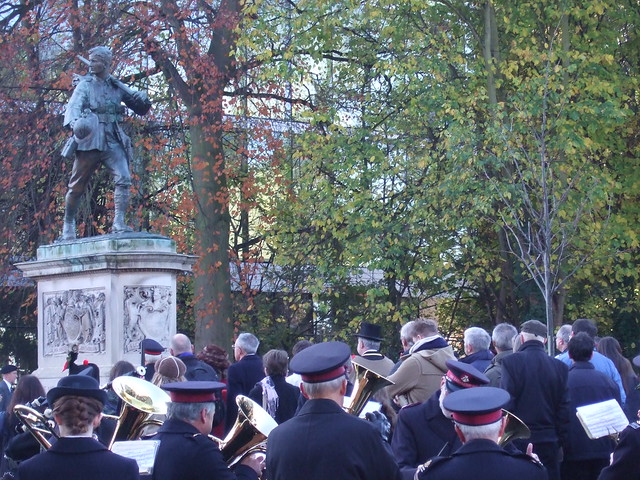 |
| Robert Tait Mackenzie's war memorial, Hills Road (read about it in my blog post here) |
A plinth lifts the sculpture from the realm of the everyday and real into the special realm of 'Art'. It also elevates the sculpture way above our heads.
A radically plinth-less sculpture:
 |
| Antony Gormley, Earthbound Plant, Downing Site, Cambridge (read about it in my blog here) |
We can't look Flanagan's hare in the eye but the camera can zoom up close and create a detail.
Notice the texture and reflections of the material. Material is very important for sculpture. The Cricketer is cast in bronze. We see the joints of the plaster of the sculpture (before it was cast). We see the lumps and uneven bits; we can almost imagine the sculptor's hands moulding and forming the material.
Bronze also reflects the light. Flanagan has chosen not to polish this bronze to a high gleam so it's a bit matt.
If he weren't so high up, I'd knock the hare on his legs to see if he's hollow.
Here are some different materials:
Wood. This reflects very little if not polished. You can see the grain. You can feel the rough surface texture.
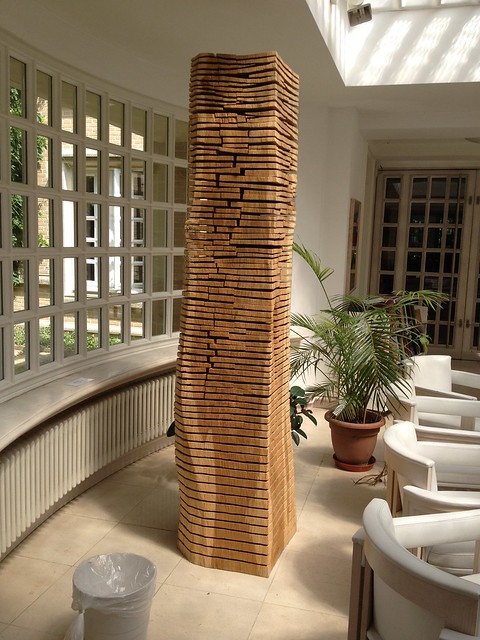 |
| David Nash, Crack and Warp Column, oak, Jesus College Library, installed 2007 (not accessible to the public but see it through the window) |
Glass. This reflects light a lot. And the sky. And the leaves. It also reflects you when you peer at it.
Feel it: cool and smooth.
 |
| Danny Lane, Empress (detail), layered glass, Jesus College grounds |
Stone. Stone can reflect light, if it's polished, and some stone, like marble, also has its own internal luminescence. This statue is probably of Saint Radegund, patron saint of the mediaeval nunnery which forms the core of Jesus College. This statue's stone is quite matt.
Look how the drapery creates a play of light and shadow that animates the figure. Sculpture always reckons with shadows.
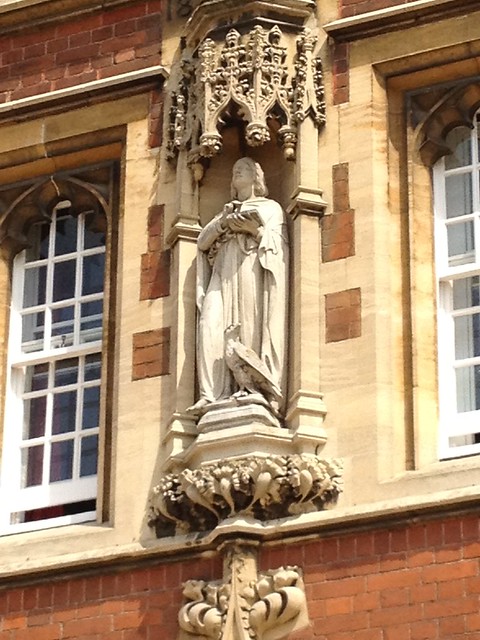 |
| Stone statue in a niche attached to a façade in Jesus College |
Flanagan's Cricketer casts a distinctive silhouette shadow on the grass.
The lumps and lines on the bronze also create their own internal attached shadow play. This changes, depending on the time of day and the weather. (That's why it's great to look at outdoor sculpture.)
Take another look at the hare's right hand: it's curled around a ball. This must be a cricket ball. After all, this sculpture is called Cricketer and it stands in the cricket grounds of Jesus College.
Is this a hare or some other beast? I think it's a hare because hares were a preoccupation of Barry Flanagan's.
 |
| Barry Flanagan, Leaping Hare on Crescent and Bell, 1988, Broadgate, London (near Liverpool Street station) Source: Wikimedia; © Jim Linwood. |

All my examples are taken from the sculpture collection of Jesus College.
What: The Cricketer, 1989
Who: By Welsh sculptor Barry Flanagan who sadly died in 2009.
Where: Jesus College cricket ground, Jesus Lane
Thanks to all my Korean students from the Kaewon School of Art & Design who came to Cambridge for a Summer School of language and art history, and joined me on a visit to Jesus College. And a special thanks to Mike O'Brien who kindly showed me round and told me the fascinating history of the college.
Permalink: http://artincambridge.blogspot.com/2014/02/how-to-look-at-sculpture-in-jesus.html
Permalink: http://artincambridge.blogspot.com/2014/02/how-to-look-at-sculpture-in-jesus.html


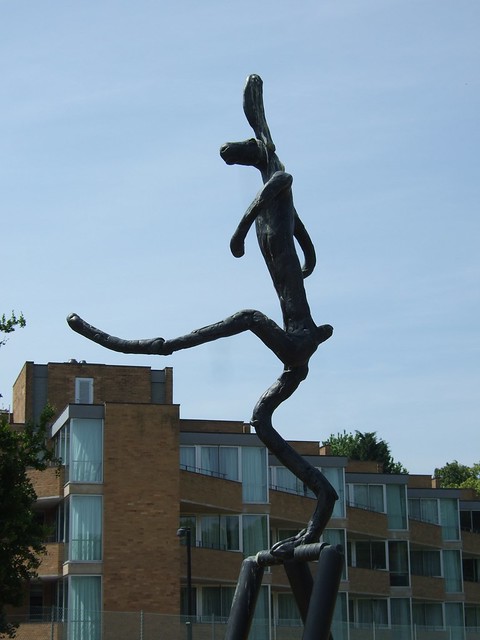


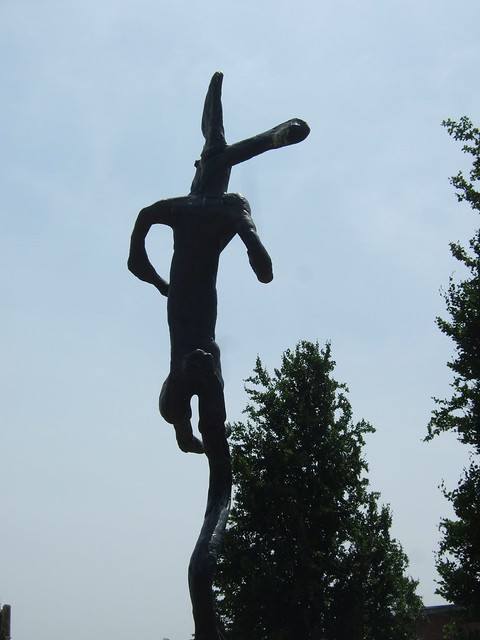
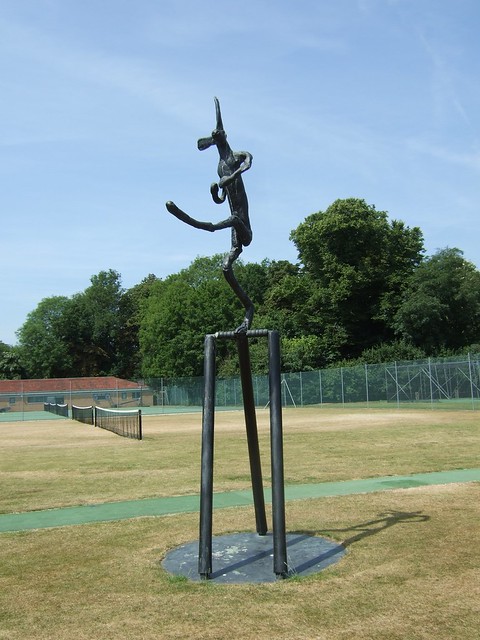
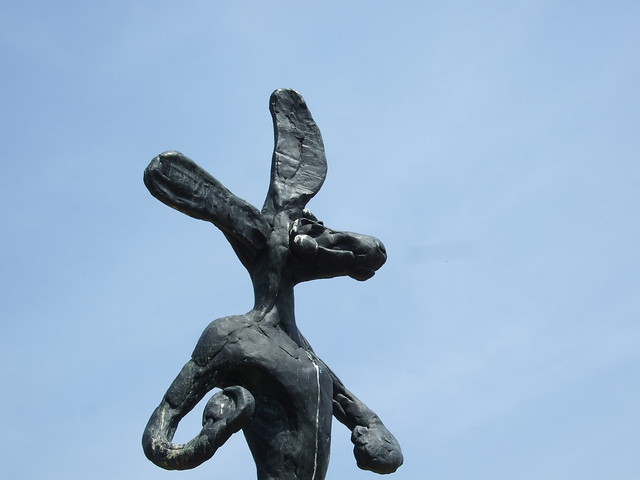
No comments:
Post a Comment